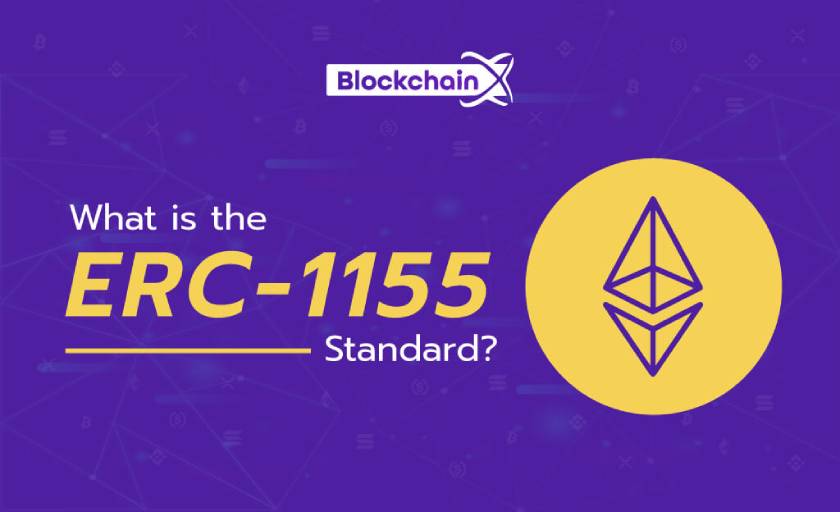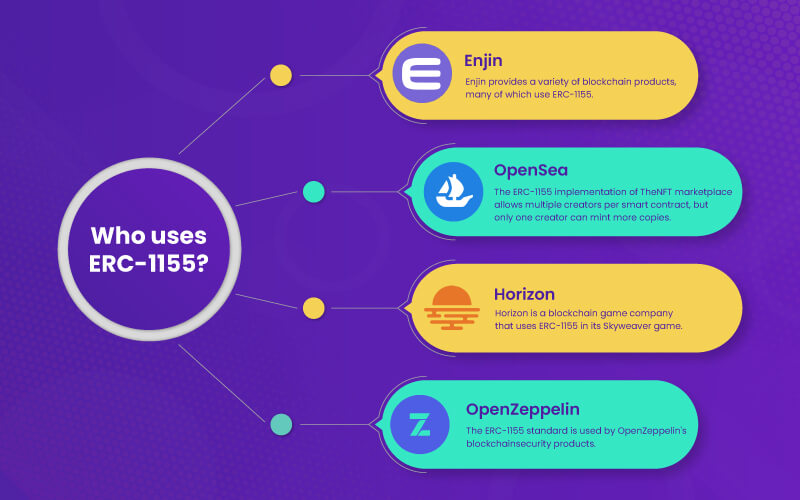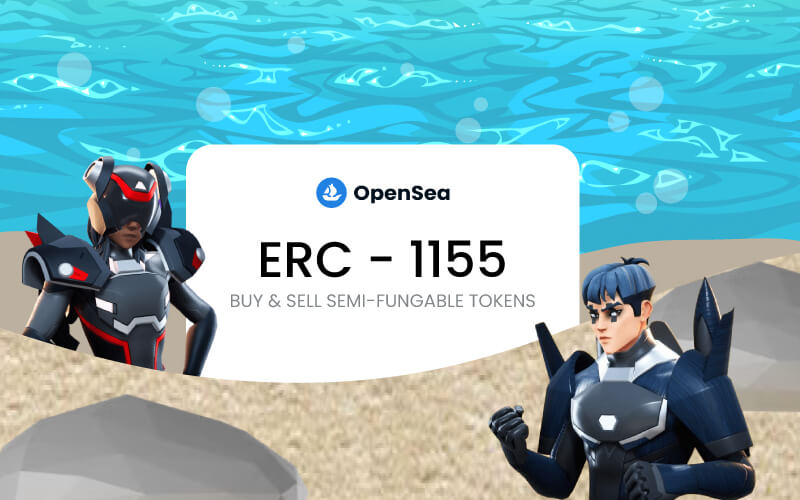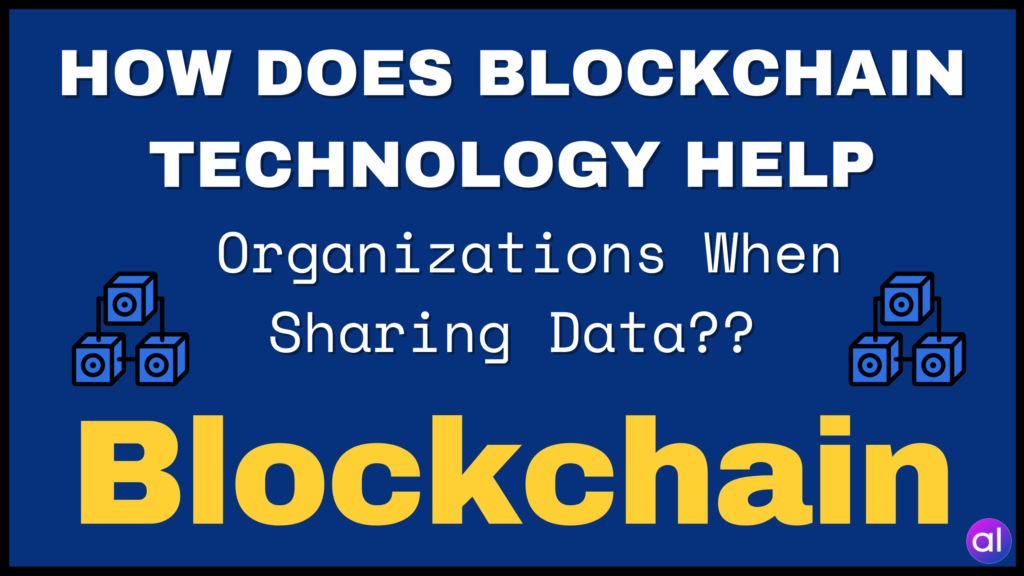
If you have a good understanding of what an NFT is and the term “Non-fungible token” no longer confuses you, then you are ready to dive deeper into the world of ERC-1155. This is essential before delving into the specifics of ERC-1155.
To address various concerns, the ERC-1155 standard was introduced, allowing for tokens that can be both fungible and non-fungible. This standard enables the minting and deployment of an unlimited number of tokens under a single smart contract, reducing network congestion and gas fees.
In this article, we will define the ERC-1155 token standard and explore its benefits and advantages.
What is ERC-1155?

ERC stands for “Ethereum Request for Comments,” which is a type of EIP focusing on Ethereum application standards, including tokens. Tokens are typically categorized as fungible or non-fungible. Fungible tokens, like currency, are interchangeable, while non-fungible tokens, like unique collectibles, are not.
Before ERC-1155, the most common token standards were ERC-20 for fungible tokens and ERC-721 for non-fungible tokens. However, these two standards could not coexist in the same smart contract, leading to inefficiencies and high costs when transferring different types of tokens. ERC-1155 addresses this issue by combining both token standards, allowing for efficient transfers of fungible and non-fungible tokens in a single transaction.
How does ERC-1155 work?

The ERC-1155 standard was initially developed to address challenges faced by blockchain game developers and players. While ERC-1155 is widely used in gaming applications, it has also found applications in various other fields. Gaming serves as a useful example for understanding how ERC-1155 operates.
In massively multiplayer online games (MMOs), players can collect and trade tens of thousands of items, each of which is a token on the blockchain. Prior to ERC-1155, each item required its own smart contract, resulting in numerous smart contracts for a single game. With ERC-1155, multiple items can be stored in a single smart contract, allowing for the transfer of multiple items to different recipients in a single transaction.
What makes ERC-1155 unique?
ERC-1155 offers several unique features, including the ability to transfer multiple token types simultaneously, leading to increased efficiency and lower transaction costs.
Unlike ERC-20 and ERC-721, which require separate smart contracts for each token type, ERC-1155 supports an unlimited number of tokens. Additionally, it supports semi-fungible tokens, which can function as both fungible and non-fungible tokens.
ERC-1155 also includes a safe transfer function, unlike its predecessors, allowing tokens to be recovered if sent to the wrong address.
Who uses ERC-1155?
Enjin – Enjin offers various blockchain products that utilize ERC-1155.
Horizon – Horizon, a blockchain gaming company, incorporates ERC-1155 in its Skyweaver game.
OpenSea – The NFT marketplace’s ERC-1155 implementation enables multiple creators per smart contract, with restrictions on minting copies.
OpenZeppelin – OpenZeppelin utilizes the ERC-1155 standard in its blockchain security products.
The Benefits of the ERC-1155 token standard
1. Token transfers in batches
The ERC-1155 standard allows for batch token transfers, enabling users to transact an unlimited number of tokens using a single smart contract, reducing network congestion and gas fees.
2. Token with multiple functions
ERC-1155 tokens can function as both fungible and non-fungible tokens, providing versatility by allowing a single smart contract to handle both types of tokens simultaneously.
3. External metadata that is more efficient
ERC-1155 removes metadata from smart contracts and replaces it with a JSON file, reducing congestion on the blockchain by transferring data to a separate file.
4. Integrated transaction validation
ERC-1155 includes a built-in function for validating transactions, ensuring that tokens are not lost in case of errors or incorrect addresses.
The Primary Advantages of ERC-1155
Some of the main advantages of ERC-1155 include:
Allows the use of NFTs, fungible tokens, and semi-fungible tokens.
Increased level of security.
Lower gas prices.
Improved support for decentralized exchanges (DEXs).
Workload reduction.
Metadata that changes over time.
The Future of ERC-1155
While ERC-1155 has been around for several years, it is still underutilized compared to ERC-20 and ERC-721. As more projects recognize the versatility of ERC-1155, there may be a shift towards adopting this standard for expanded functionality.
ERC-1155 is expected to play a significant role in Ethereum-based blockchain games, especially with the rise of play-to-earn games.
In conclusion
The emergence of fungible and non-fungible tokens on the Ethereum blockchain has led to the development of various standards, such as ERC-20 and ERC-721. However, the inability of these standards to coexist efficiently prompted the creation of ERC-1155. This new standard allows NFTs and other tokens to share a smart contract, enhancing interoperability and efficiency in token transactions.



